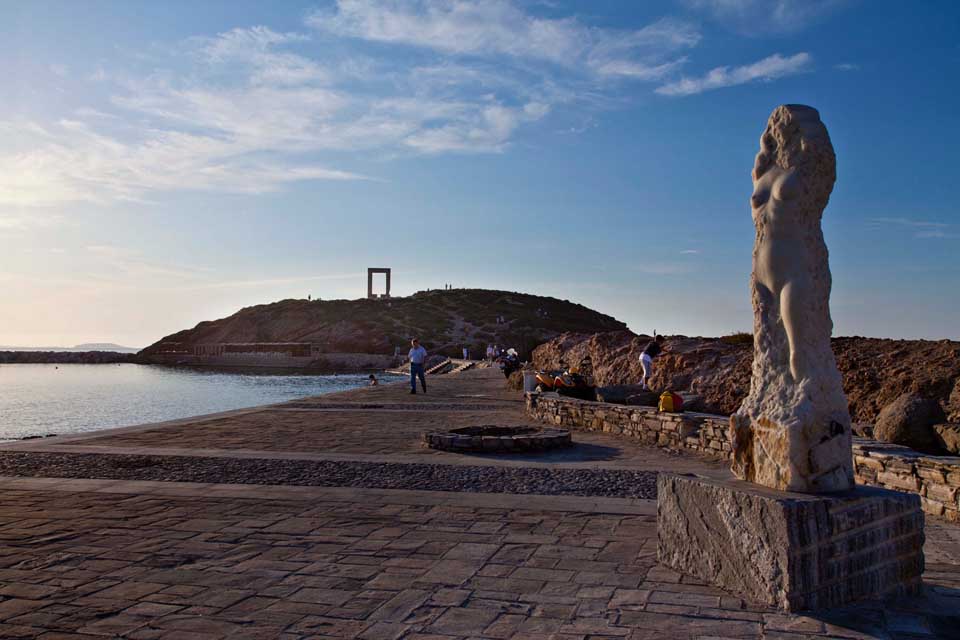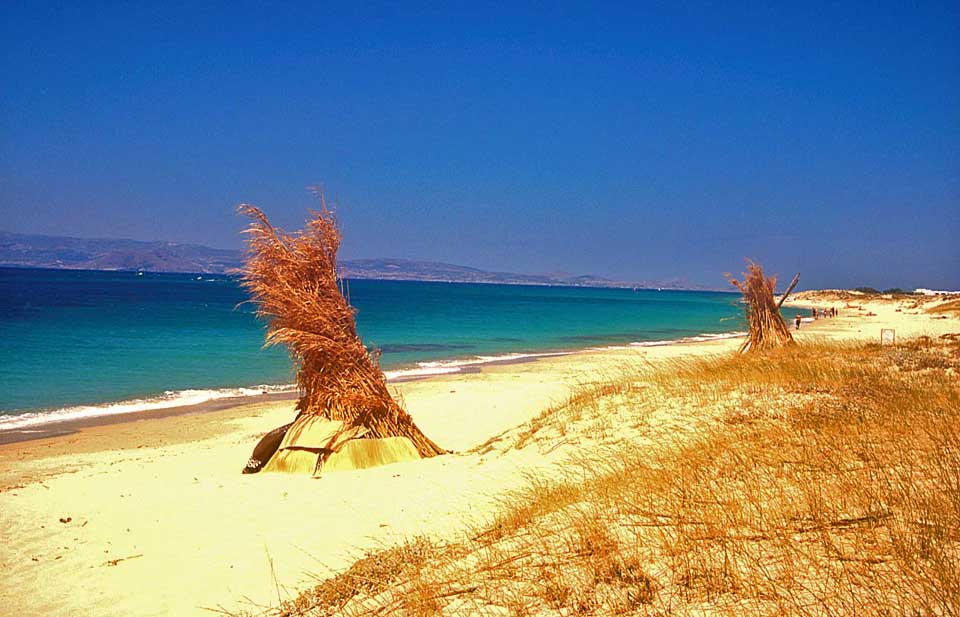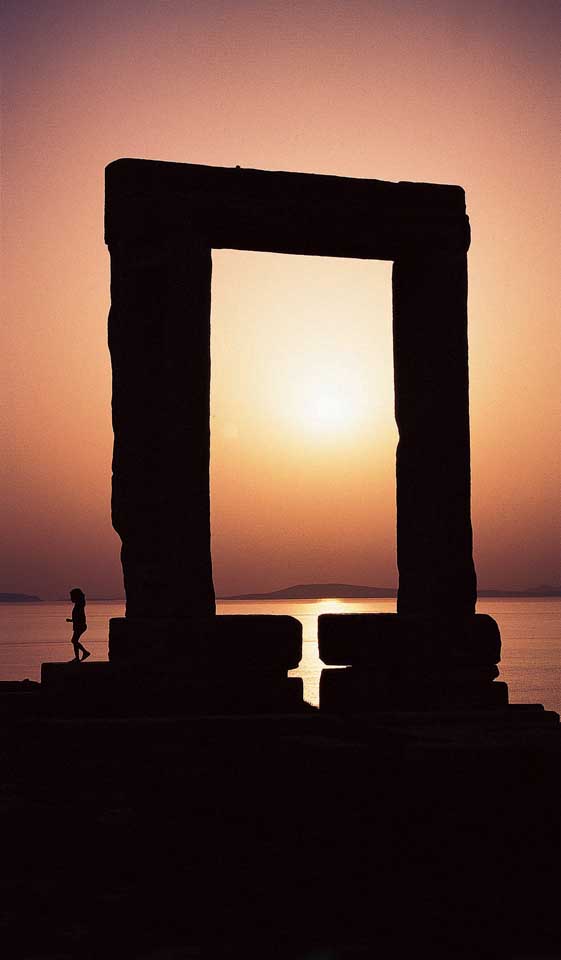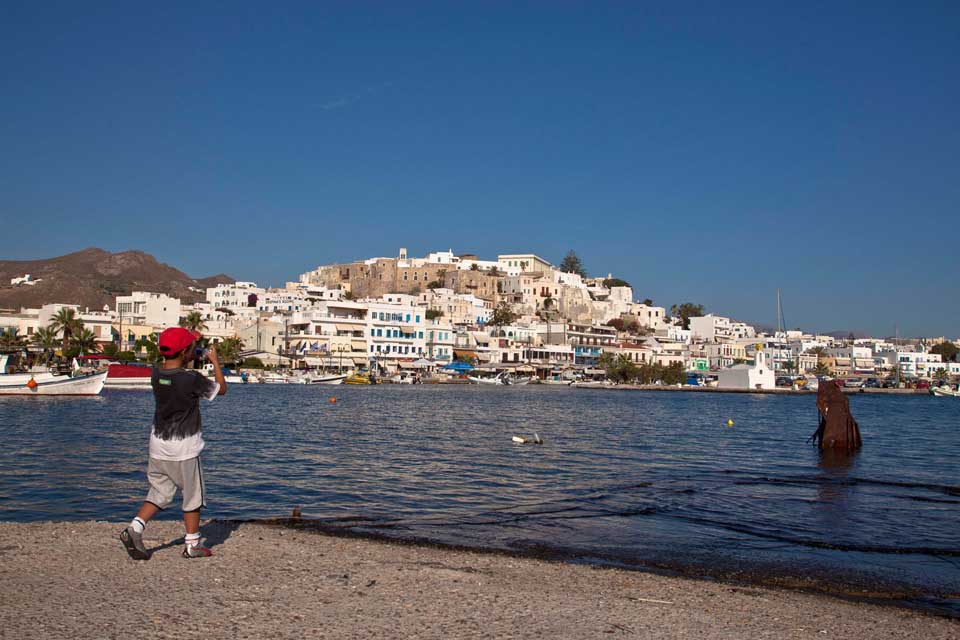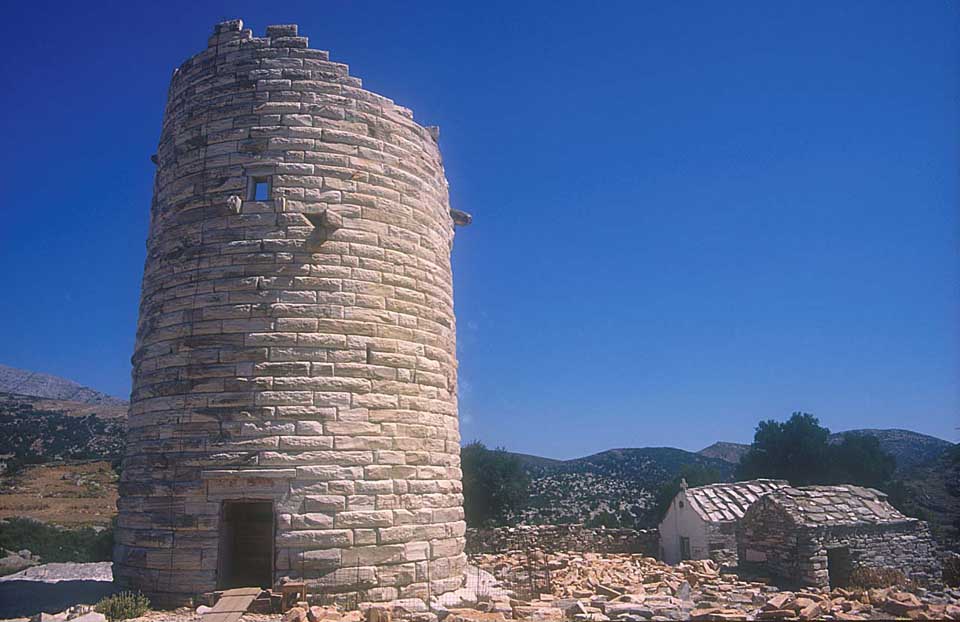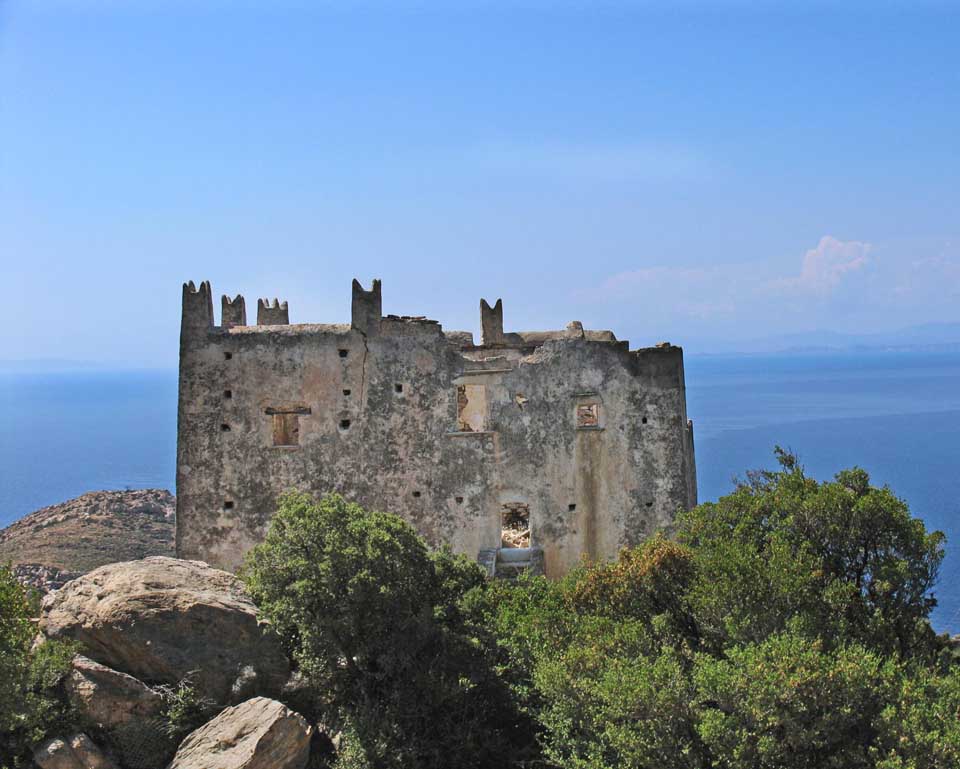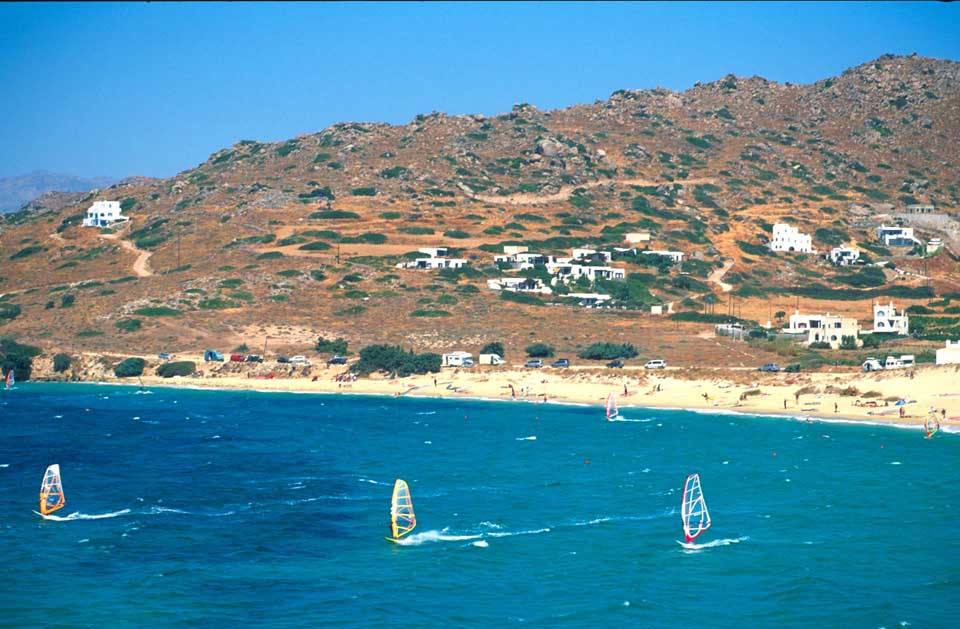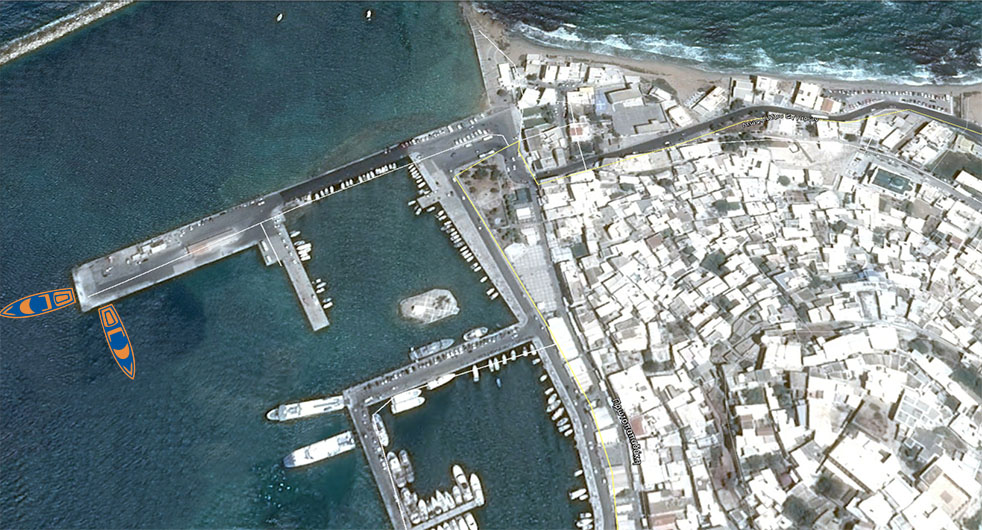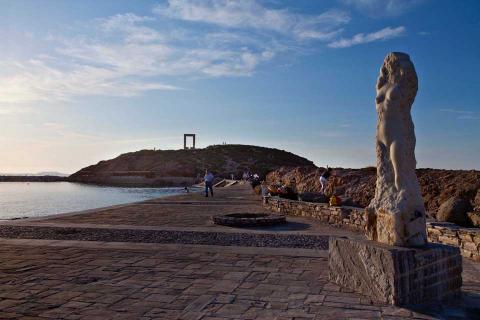
Chora, with its plethora of monuments, which attest to its illustrious past. The best-known of these monuments is “Portara” the enormous marble gate of a temple measuring 100 Greek feet, whose building phase began in the 6th century BC; it was possibly dedicated to Apollo, but was never finished. “Portara” stands imposingly on the islet of “Palatia,” on the left side of the port. From here you will enjoy a marvellous sunset.
The Castle, which is a live medieval museum with a unique atmosphere. Passing through its gates you will immediately be transported to another space and time. Here you will visit the Archaeological Museum, the Della Rocca Barozzi tower, which today houses the Venetian Folklore Museum, the Crispi Tower, which operates as a Byzantine Museum, the Capella Casazza, the Ursuline School and Monastery, which was recently renovated by the Archdiocese of Tinos and Naxos and operates as the spiritual and cultural center of the Catholic Archdiocese, the Catholic Metropolitan Church, with its marble floor and the tombstones bearing coats of arms, as well as the Byzantine icon of the Panaghia that represents her standing upright.
Apeiranthos, the traditional stonebuilt village situated at the foot of mountain Fanari. The beautiful, old, two-storey houses, the marble alleys and the picturesque squares create an imposing atmosphere that we rarely come across in the Cyclades. Apart from the village’s beauty, your interest will also be captured by the museums you will find here, namely the “Michalis Bardanis” Archaeological Museum, the Folklore Museum, the “Petros Protopapadakis” Geological Museum, the Natural History Museum and the Apeiranthos Museum of Visual Arts.
Melanes, one of Naxos’ oldest villages, is built amphitheatrically on the hillslope at the valley of the same name. In the greater Melanes area you will find some of the most significant sights in Naxos, such as the Kouros of Melanes, work of the 6th century BC.
The area called Sagri, with its plethora of Byzantine churches and the famous monastery of Aghios Eleftherios, which operated as a secret school during the Turkish Rule and today houses the Folklore Museum. Nearby, in the fertile valley of Baouzi, you can see the abandoned temple of Demeter, dating to the 6th century, which was restored recently, and is considered to be one of the most representative ancient temples. The Bazeos Tower, a 17th century monument, which was restored in 2001; every summer since then it has been hosting the Naxos Festival, featuring art exhibitions.
The beach of Aghia Anna, and its continuation, the beautiful Plaka, with its golden sand and transparent, azure waters.
